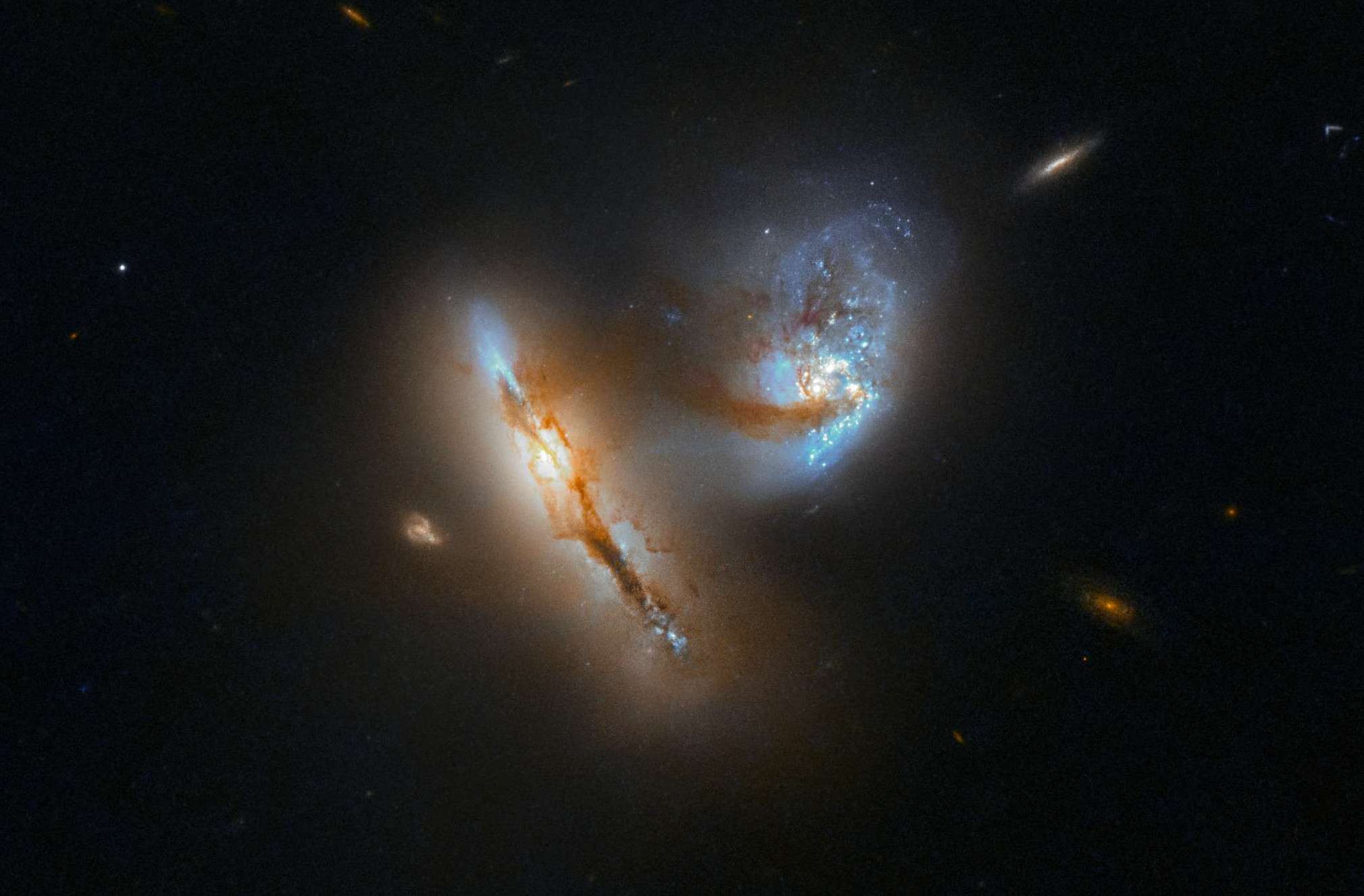O Hubble atopa dúas galaxias encerelladas

Créditos: Hubble, NASA, ESA
(Pulsar foto para ampliar / Press photo to expand)
Play audio MP3
(Pulsar sobre texto para cambiar de idioma)
(Press on text to change language)
A parella de galaxias nomeadas UGC-2369 están atrapadas nunha aloucada danza cósmica, tirando unha da outra, e así poden verse nunha recente imaxe do telescopio espacial Hubble.
Esta colisión de galaxias a cámara lenta está a uns 424 millóns de anos luz de distancia. (Un ano luz é a distancia que percorre a luz nun ano, aproximadamente 1000 billóns de quilómetros).
As dúas coleccións de estrelas gas e po están tan preto una da outra que unha tenue ponte de material atravesa a fenda intergaláctica. Este material provén da "división minguante" entre as dúas galaxias, dixo a Axencia Espacial Europea nun comunicado .
"As interaccións son eventos comúns na historia da maioría das galaxias", afirmou a ESA. "Para galaxias máis grandes como a Vía Láctea, a maioría destas interaccións involucran galaxias ananas significativamente máis pequenas. Pero cada poucos miles de millóns de anos, pode ocorrer un evento máis transcendental".
A nosa Vía Láctea, por exemplo, está nun inevitable curso de colisión coa galaxia xigante veciña, Andrómeda. É probable que nuns catro mil millóns de anos observadores distantes vexan como as dúas galaxias gradualmente se convertan nunha soa. A Axencia espacial Europea alcuma "Milkomeda" a esta nova galaxia fusionada.
Hubble capturou galaxias en todo o ceo durante os seus case 30 anos de operacións. Algunhas das súas imaxes galácticas máis famosas remóntanse a un intre pouco despois do Big Bang no que se formou o universo, fai uns 13.700 millóns de anos. A última imaxe deste tipo, a do Campo Ultra Profundo, data de 2016.





